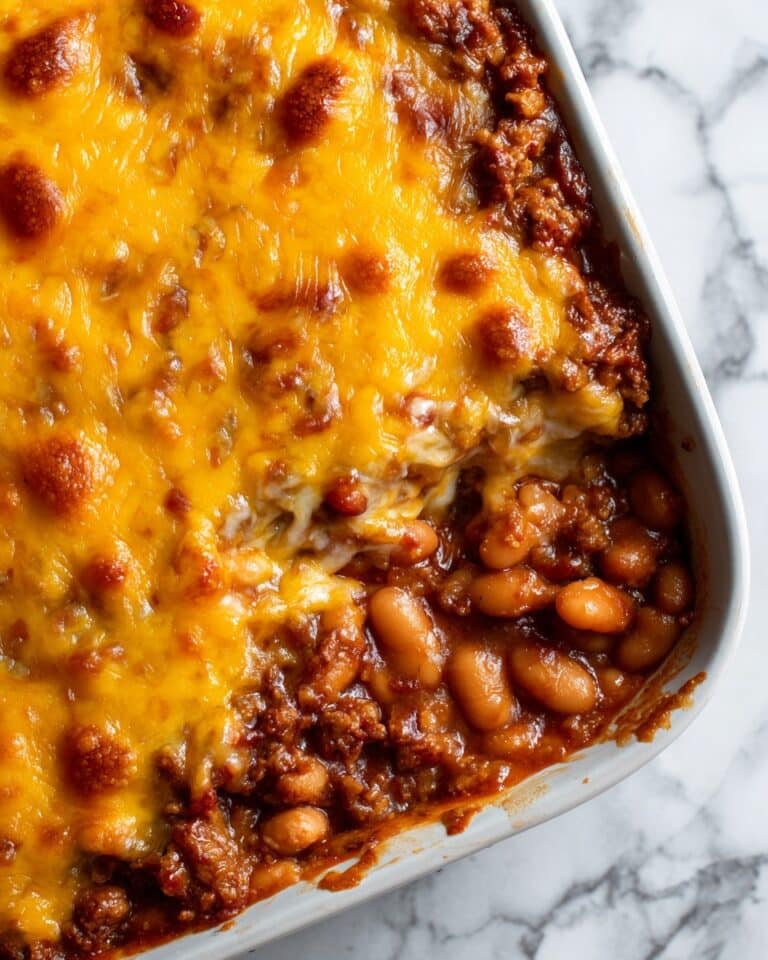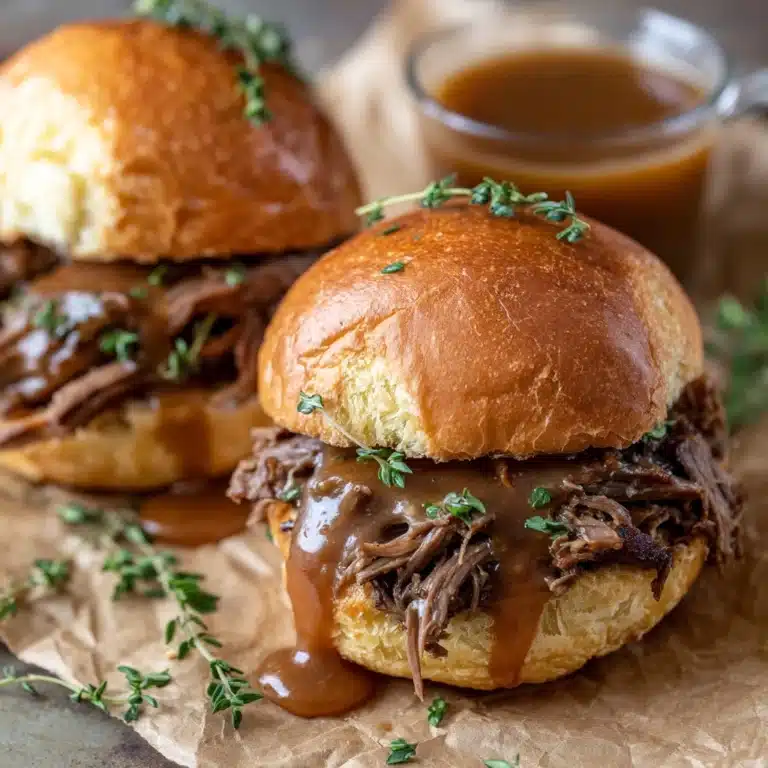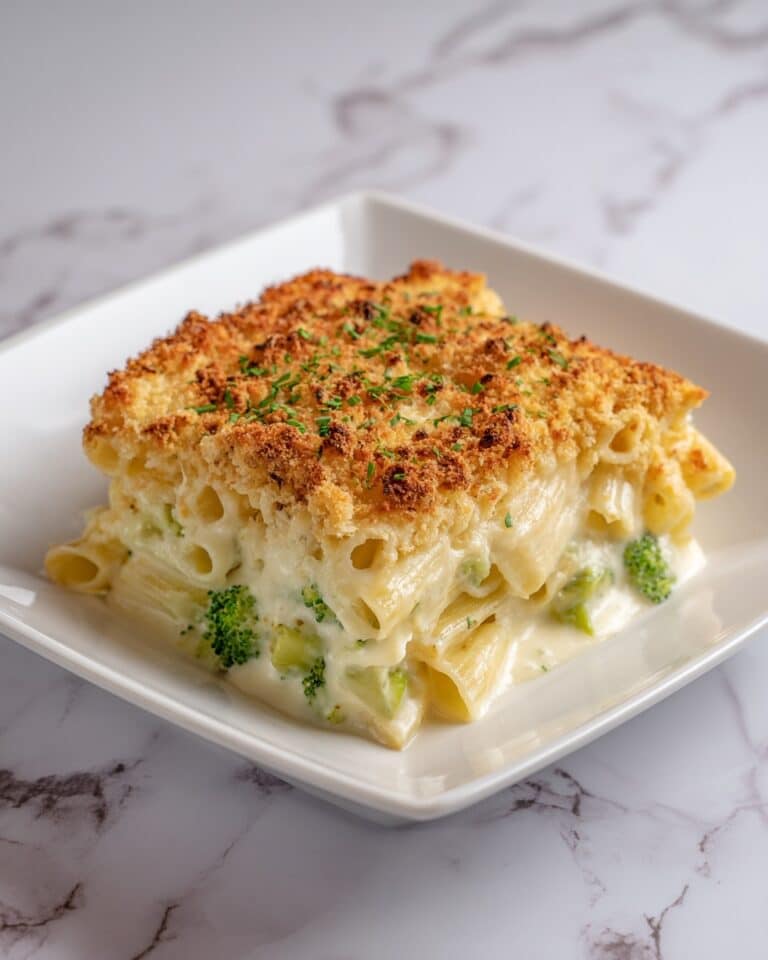Gochujang Scrambled Eggs Recipe
If you love bold flavors and a little morning adventure, Gochujang Scrambled Eggs are about to be your new go-to breakfast favorite. This dish takes the familiar comfort of creamy scrambled eggs and swirls in a punch of Korean gochujang paste, creating a fusion that’s spicy, savory, and irresistibly satisfying. Every bite is a delightful balance of heat, richness, and just enough umami to start your day with a smile. Whether you eat them with buttery toast or a warm bowl of rice, these eggs pack a flavor journey you’ll crave again and again.
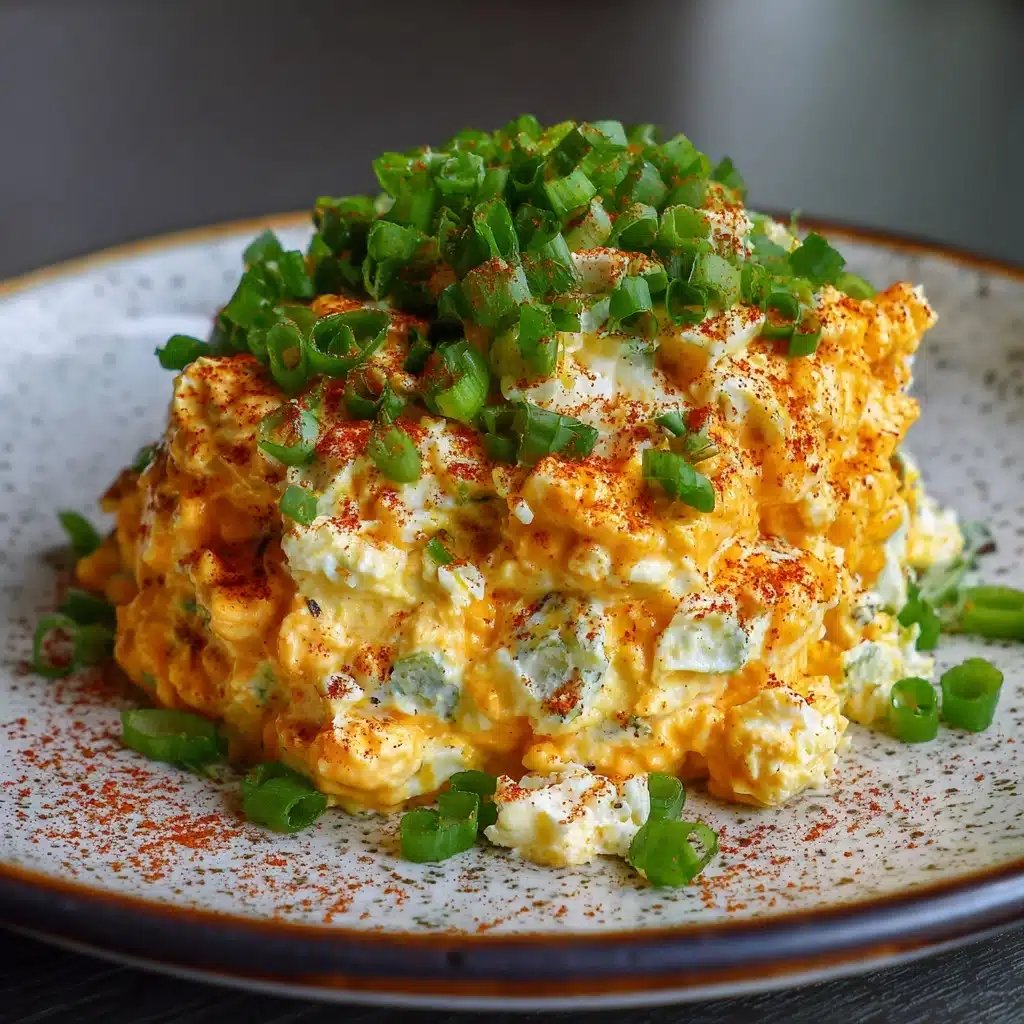
Ingredients You’ll Need
The beauty of Gochujang Scrambled Eggs is that the ingredient list is short, but every component truly matters. Each item brings a unique note to the dish—whether it’s creamy texture, spicy depth, or a final pop of color—so grab your freshest eggs and let’s break down what you’ll need.
- Eggs: The heart of the dish—use the freshest large eggs you can find for the creamiest results.
- Milk or Cream: Just a splash makes the eggs extra tender and gives them that beloved silky texture.
- Gochujang (Korean red chili paste): The star ingredient—this vibrant, umami-rich paste provides heat and a distinctive savory complexity.
- Soy Sauce: A subtle salty bite that enhances the natural flavor of the eggs and deepens the overall taste.
- Sesame Oil: Just a teaspoon gifts the eggs with a toasty aroma and that unmistakably nutty note of Korean cuisine.
- Unsalted Butter: Melts into the pan and ensures a soft, luscious scramble every time.
- Green Onion: Thinly sliced for a fresh, peppery crunch and a splash of color right on top.
- Toasted Sesame Seeds (optional): For those who love texture and a little extra nutty essence in the final bite.
- Salt and Black Pepper: Essential for seasoning and balancing the dish—taste as you go, especially since gochujang and soy sauce add some saltiness already.
How to Make Gochujang Scrambled Eggs
Step 1: Whisk Together the Egg Base
Start by grabbing your favorite mixing bowl. Crack in all four eggs, then add the milk (or cream), gochujang, soy sauce, sesame oil, a pinch of salt, and some fresh black pepper. Take a minute to whisk everything together until the mixture is fully combined and smooth—the gochujang should be thoroughly incorporated, creating an appetizing reddish-orange hue. This guarantees each bite of your Gochujang Scrambled Eggs will be packed with flavor.
Step 2: Melt Butter and Heat the Pan
Set a nonstick skillet over medium-low heat and add the butter. Let it slowly melt and bubble gently without browning. This step is important because the butter creates a luxurious foundation for your eggs and keeps them from sticking, all while adding subtle richness.
Step 3: Pour and Set the Eggs
Pour your well-whisked egg mixture gently into the warmed skillet. Let it sit undisturbed for about 10 to 15 seconds; this allows the bottom to just barely set, which means you’ll end up with lovely soft curds and not a dense omelet.
Step 4: Gently Stir for Creamy Curds
Using a silicone spatula, slowly stir the eggs by pushing from the edges toward the center. Move gently and don’t rush—it’s all about coaxing delicate, custardy curds to the surface. Stir occasionally, and lower the heat if needed to keep things creamy rather than dry.
Step 5: Remove from Heat While Slightly Underdone
Once the eggs are mostly set but still look a bit glossy and soft, remove your skillet from the heat. The residual warmth will finish gently cooking the eggs to absolute perfection. This is the secret to scrambled eggs that are cloud-soft, never rubbery.
Step 6: Garnish and Serve
Spoon the Gochujang Scrambled Eggs onto plates and generously scatter with sliced green onions and toasted sesame seeds. This final touch adds crunch, brightness, and a beautiful, inviting finish. Serve immediately for the dreamiest creamy texture.
How to Serve Gochujang Scrambled Eggs
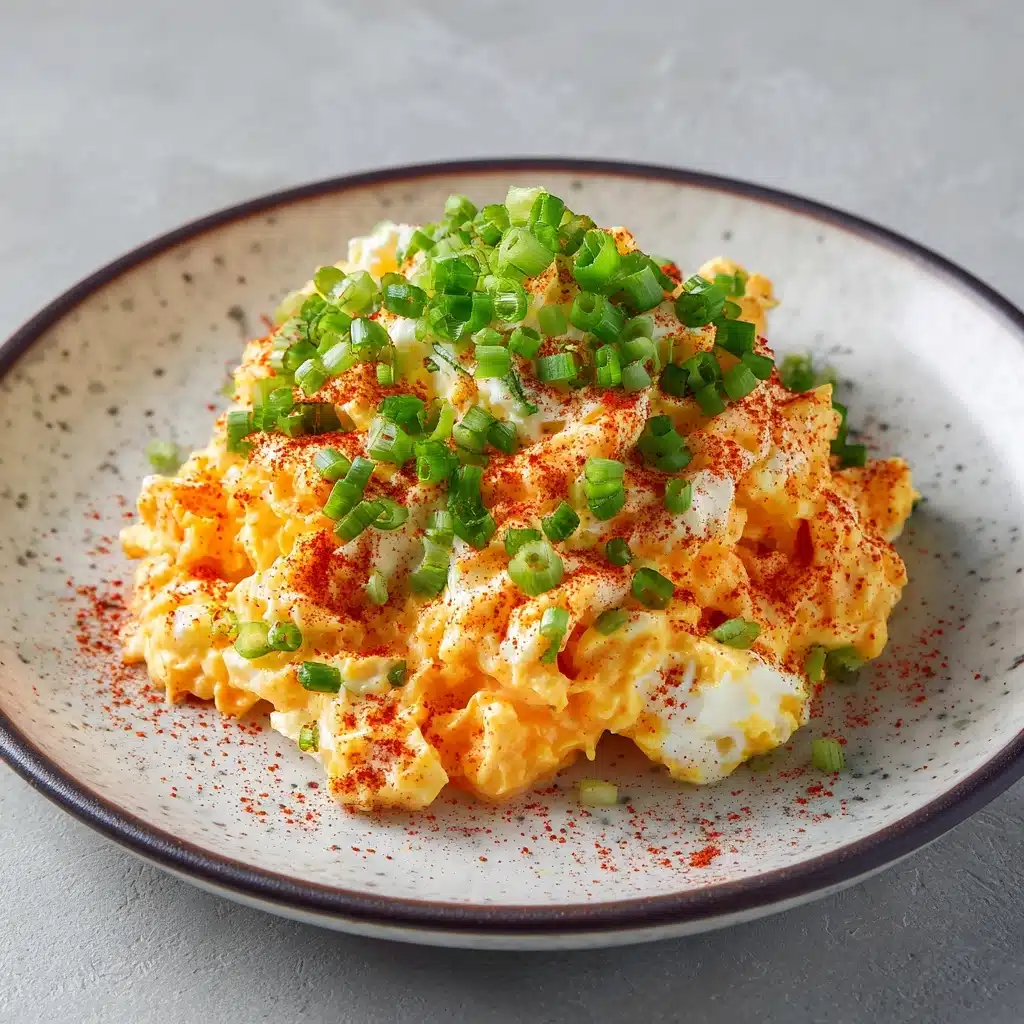
Garnishes
A hearty sprinkle of fresh green onions and toasted sesame seeds will wake up the colors and flavors of your Gochujang Scrambled Eggs. If you’re feeling extra fancy, a drizzle of extra sesame oil or a few chili flakes can bring an extra kick and aroma to the table.
Side Dishes
You can’t go wrong pairing these eggs with plain steamed rice or a thick slice of crusty sourdough toast. Interested in a fuller spread? Sautéed spinach, roasted sweet potatoes, or even quick pickled cucumbers all make wonderful companions that balance out the savory heat.
Creative Ways to Present
Try serving your Gochujang Scrambled Eggs inside a warm tortilla as a breakfast taco, or pile them into lettuce wraps for a fresh, spicy bite. If you have leftover rice, transform it into a satisfying breakfast bowl topped with avocado, microgreens, or nori strips for extra flair.
Make Ahead and Storage
Storing Leftovers
If you find yourself with leftover Gochujang Scrambled Eggs (unlikely, but it happens!), let them cool completely before transferring to an airtight container. They’ll keep in the fridge for up to two days and can be enjoyed cold, especially in a rice bowl or wrap.
Freezing
While fresh is always best, you can freeze your scrambled eggs for up to a month. Place portions in freezer-safe bags, squeeze out excess air, and lay flat. Thaw overnight in the fridge before reheating for the best texture.
Reheating
Gently reheat the eggs in a nonstick skillet over low heat, stirring just until warmed through—avoid overcooking them to keep that creamy texture. A splash of milk during reheating helps restore their silkiness.
FAQs
Can I make Gochujang Scrambled Eggs dairy-free?
Absolutely! Swap the butter with your favorite non-dairy margarine or use olive oil. Substitute the milk or cream with unsweetened plant milk for a delicious, dairy-free option.
How spicy are these scrambled eggs?
The heat levels hinge totally on your choice of gochujang and how much you add. The recipe is mildly spicy, but you can dial it down by using less gochujang or crank it up with an extra spoonful.
Is this recipe gluten-free?
If you use a gluten-free soy sauce or tamari and check that your gochujang doesn’t contain wheat, your Gochujang Scrambled Eggs will be 100 percent gluten-free.
Can I make these eggs in advance for meal prep?
While scrambled eggs are at their creamiest right after cooking, you can prep them ahead. Store in individual containers and gently reheat—perfect for busy mornings or quick lunches.
What else can I add for extra protein?
Feel free to fold in diced cooked tofu, sautéed mushrooms, or a handful of baby spinach just before the eggs finish cooking. These add-ins boost the protein content and make the dish even heartier.
Final Thoughts
Gochujang Scrambled Eggs are more than just a breakfast staple—they’re a cheerful, flavor-packed way to shake up your mornings (or evenings!). Give them a try and let yourself fall in love with their creamy texture and irresistible spicy kick. Who says eggs have to be ordinary?
Print
Gochujang Scrambled Eggs Recipe
- Total Time: 10 minutes
- Yield: 2 servings 1x
- Diet: Vegetarian
Description
These Gochujang Scrambled Eggs are a spicy twist on a classic breakfast dish. Creamy and flavorful, they are quick and easy to make, perfect for a delicious morning meal.
Ingredients
Egg Mixture:
- 4 large eggs
- 2 tablespoons milk or cream
- 1 tablespoon gochujang (Korean red chili paste)
- 1 teaspoon soy sauce
- 1 teaspoon sesame oil
- Salt and black pepper to taste
Additional:
- 1 tablespoon unsalted butter
- 1 green onion, thinly sliced
- Toasted sesame seeds for garnish (optional)
Instructions
- Prepare Egg Mixture: In a bowl, whisk together the eggs, milk, gochujang, soy sauce, sesame oil, salt, and black pepper until smooth and fully combined.
- Cook Eggs: Heat the butter in a nonstick skillet over medium-low heat. Pour in the egg mixture and let it sit for 10–15 seconds, then gently stir with a spatula, pushing from the edges toward the center. Continue cooking, stirring occasionally, until the eggs are softly set and creamy.
- Finish and Serve: Remove from heat while slightly underdone, as they will finish cooking off the heat. Garnish with sliced green onion and sesame seeds. Serve immediately with rice or toast.
Notes
- Adjust the amount of gochujang based on your spice preference.
- For extra richness, stir in a small spoonful of cream cheese at the end.
- Prep Time: 5 minutes
- Cook Time: 5 minutes
- Category: Breakfast
- Method: Stovetop
- Cuisine: Korean-Inspired
Nutrition
- Serving Size: 2 eggs
- Calories: 190
- Sugar: 2g
- Sodium: 410mg
- Fat: 14g
- Saturated Fat: 6g
- Unsaturated Fat: 7g
- Trans Fat: 0g
- Carbohydrates: 4g
- Fiber: 0g
- Protein: 12g
- Cholesterol: 255mg
